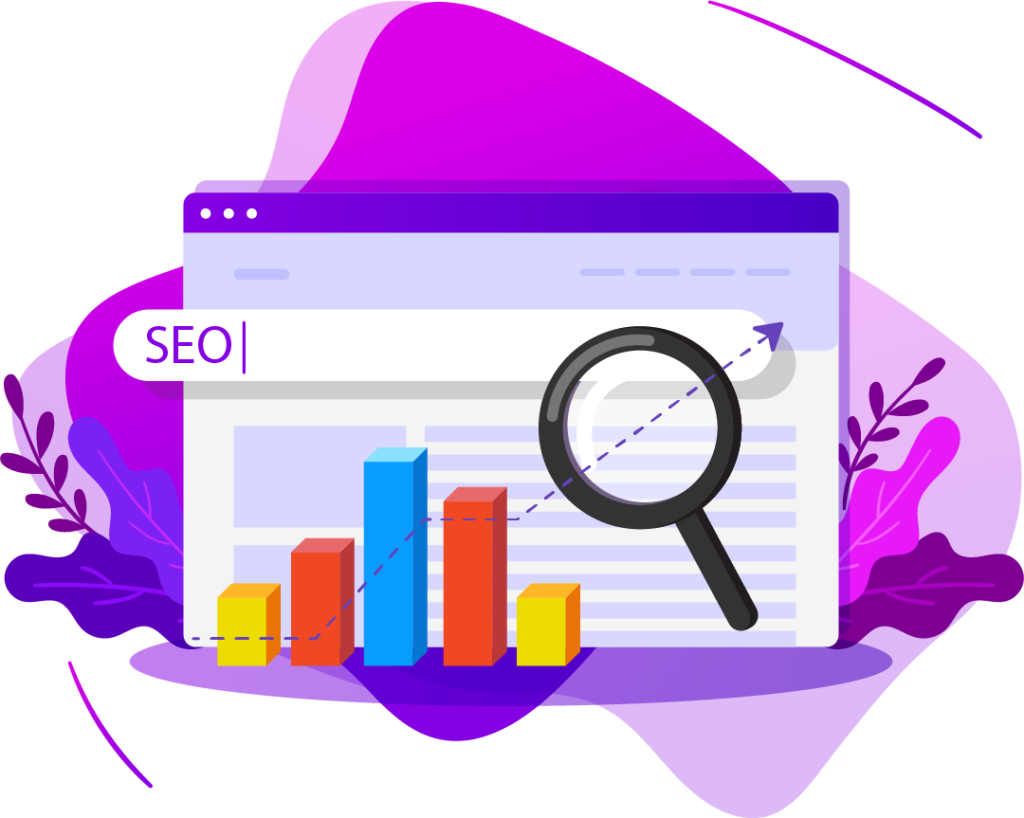SEO vs. SEM in 2024
When it comes to driving traffic to your website and growing your online presence, the debate between Search Engine Optimization (SEO) and Search Engine Marketing (SEM) continues in 2024.
Both strategies are vital for businesses, but knowing which one to prioritize depends on your goals, budget, and timeline.
In this blog, we’ll break down the key differences between SEM and SEO in 2024 and help you decide which approach is best for your growth strategy.
Index
1. What is SEO in 2024?
Search Engine Optimization (SEO) is all about optimizing your website to rank higher on search engine results pages (SERPs) organically. In 2024, SEO strategies focus on user experience, content quality, and technical performance. Algorithms have become smarter, rewarding websites that deliver value to users through relevant and updated content.
Key aspects of SEO
- Content Optimization: High-quality, original content remains a crucial factor.
- User Experience (UX): Fast load times, mobile-friendliness, and easy navigation are prioritized.
- Core Web Vitals: Google’s Core Web Vitals, like page speed and interactivity, play a bigger role.
With SEO, the results are long-lasting, but it can take months to see significant progress. However, once you rank higher, you can expect steady organic traffic without paying per click.
2. What is SEM?
Search Engine Marketing (SEM) involves paid advertising on search engines. In 2024, SEM has evolved with advanced targeting options, giving businesses the power to reach their audience with precision. SEM includes Pay-Per-Click (PPC) ads, where you bid on keywords, and your ad appears on the top of search results when someone searches for those terms.
Key features of SEM
- Instant Visibility: You can appear on top of SERPs immediately.
- Budget Control: You can set daily limits, ensuring you never overspend.
- Advanced Targeting: Reach users based on location, device, demographics, and even behavior.
SEM is ideal for quick results, but it requires continuous investment to maintain visibility. Once you stop paying, the traffic stops.
3. Key Differences Between SEM and SEO
Although SEM and SEO share the goal of increasing visibility and traffic, their approaches and outcomes differ:
- Cost: SEO is more about time and effort, whereas SEM is a paid strategy.
- Timeframe: SEO takes longer to see results, while SEM delivers instant traffic.
- Longevity: SEO offers long-term, sustainable growth, while SEM stops once you stop paying.
- Strategy Focus: SEO focuses on organic growth through content, while SEM relies on ad spending.
4. Advantages of SEO in 2024
Why should you prioritize SEO in 2024? Here are some key advantages:
- Cost-Effective in the Long Run: While SEO may take time, once you start ranking well, you’ll receive consistent traffic without ongoing costs.
- Trust and Credibility: Users tend to trust organic search results more than paid ads.
- Sustainable Traffic: Unlike SEM, SEO provides a steady stream of traffic once established.
- High Click-Through Rate (CTR): Organic listings often get higher CTRs than paid ads.
By investing in SEO in 2024, you’re building a strong digital foundation that will continue to benefit your business long after the initial work is done.
5. Advantages of SEM in 2024
SEM offers its own set of unique benefits in 2024:
- Quick Results: With SEM, you can drive traffic to your website almost immediately after launching your campaign.
- Targeted Advertising: You can target specific audiences based on demographics, location, and even the time of day.
- Measurable Results: Every aspect of SEM can be tracked, from impressions to conversions.
- Highly Flexible: You can adjust your budget and targeting at any time, giving you complete control.
SEM is perfect for businesses that need quick results, especially for product launches, seasonal campaigns, or short-term promotions.
6. When to Prioritize SEO
In some cases, SEO should be your primary focus:
- Limited Budget: If you don’t have the budget for paid ads, investing in SEO can give you long-term results without ongoing costs.
- Long-Term Strategy: If your goal is to build lasting traffic and credibility, SEO is your best bet.
- Content-Driven Campaigns: If you’re focusing on content marketing or have a blog, SEO can significantly boost your reach.
In 2024, if you’re patient and willing to put in the work, SEO will offer a high return on investment over time.
7. When to Prioritize SEM
Here’s when SEM should be your top priority:
- Quick Results Needed: If you need immediate traffic, SEM will get you on top of search results fast.
- Short-Term Campaigns: For time-sensitive campaigns like holiday sales or limited-time offers, SEM provides fast visibility.
- Competitive Markets: In highly competitive niches, SEM allows you to bid for top spots, bypassing organic competition.
SEM works great when you need traffic right away and have the budget to maintain it.
8. How to Balance SEM and SEO for Maximum Growth
For many businesses in 2024, a balance between SEO and SEM offers the best of both worlds. Here’s how to combine them for maximum growth:
- Use SEM for Quick Wins: Start with SEM to drive immediate traffic while building your SEO foundation.
- Invest in Long-Term SEO: Simultaneously work on SEO to create a lasting organic presence.
- Optimize Your SEM Campaigns: Use the data from your SEM campaigns to inform your SEO strategy, focusing on high-converting keywords.
- Adapt to Trends: Both SEO and SEM change rapidly, so stay updated with the latest trends to ensure your strategies remain effective.
By balancing both, you can enjoy immediate results from SEM while working toward long-term success with SEO.
9. Key Tools to Consider
To implement SEO or SEM in 2024, you need the right tools to streamline your strategies and achieve optimal results. Here are some of the top tools for both:
Key SEO Tools:
- Google Search Console: Helps track website performance, indexing issues, and search traffic.
- Ahrefs: Assists with keyword research, competitor analysis, and backlink tracking.
SEMrush: - Provides insights into organic and paid search campaigns, keyword trends, and SEO audits.
Key SEM Tools:
- Google Ads: The primary tool for creating and managing PPC campaigns. It allows detailed targeting and reporting.
- WordStream: A tool that simplifies PPC campaign management and offers insights on improving ad performance.
- SpyFu: Provides competitor insights, helping you see what keywords they are bidding on and which strategies work best.
Using these tools for both SEO and SEM in 2024 can enhance your overall digital marketing performance and help you decide which strategy is more aligned with your goals.
10. Conclusion
In 2024, the choice between SEM and SEO depends on your business needs, budget, and time. If you need immediate traffic and have the budget to spend, SEM is the way to go. However, for sustainable, long-term growth, SEO remains a solid investment. Ultimately, combining both strategies offers the best chance of achieving maximum growth.







